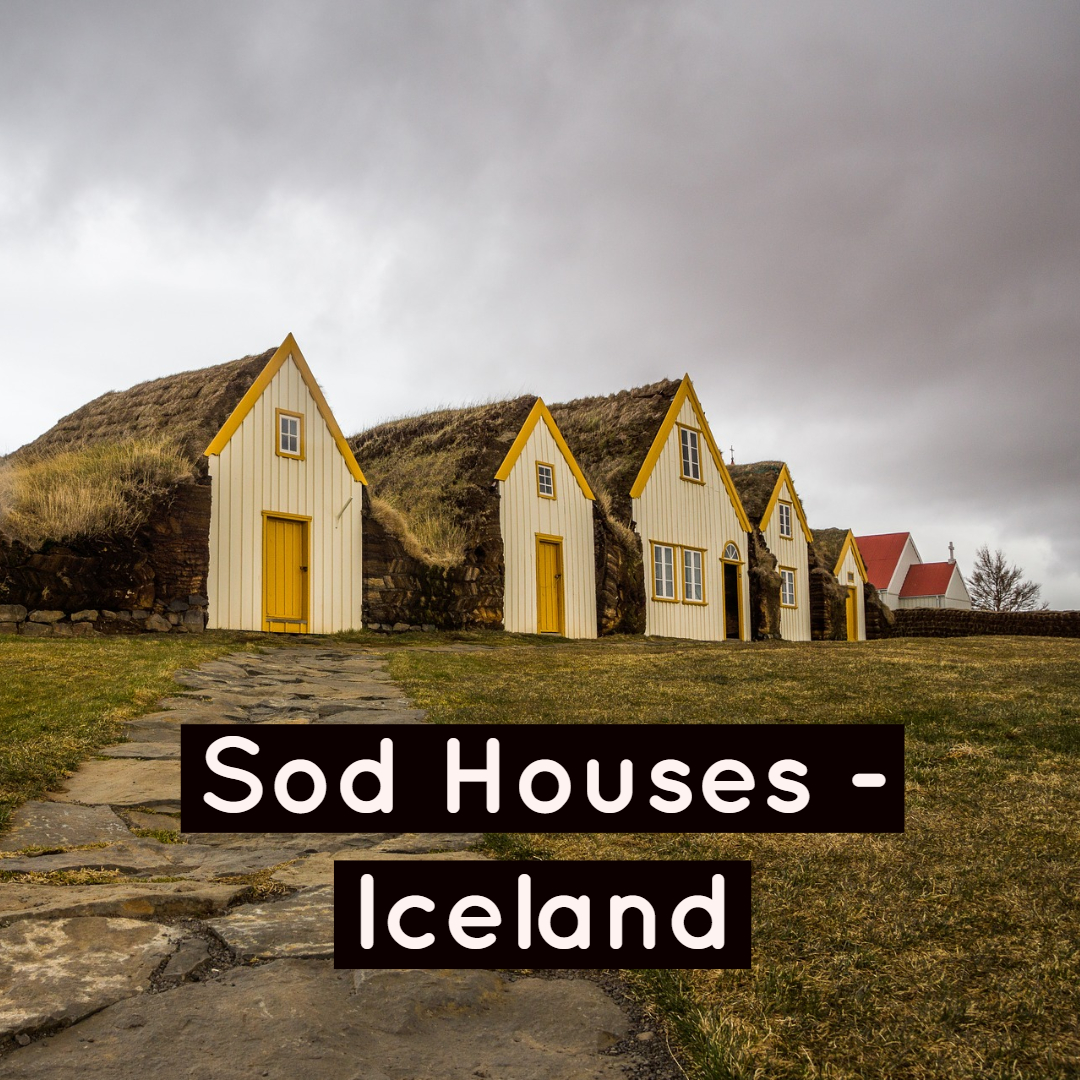Inside a turf farm house in Iceland
How did those early Icelander’s survive and even farm in such a inhospitably terrain? Before modern geothermal heating, before modern insulation and construction techniques – how did those early farmers survive the brutal winds, snow, ice and cold of living near the arctic circle? How did them manage to keep the livestock alive and tend to their daily needs of feeding and cleaning out the barn?
Short supply of wood on the island of Iceland, crazy wind and freezing temperature lead to some creative thinking on the part of early Icelanders. Pitched roof houses build right into the land with turf roofs solved many problems of keeping out of the howling wind to keep things toasty and also so the whole house didn’t blow away.
Roofs were lined with the only plentiful building material – turf or sod. Living sheets of grasses covered the roof. Volcanic rock provided the foundation and side walls.
Inside was small and sparse. Less room to heat and more body warmth to conserve. Bedrooms often housed the entire extended family in wooden bunks with sides to keep the covers handy.
One bedroom lead to another and downstairs often had passageways to the barn if the barn wasn’t in the basement. Easy access to livestock during storms and the 24 hour days of darkness in winter.
The technique of building with durable, renewable, and widely available turf first appeared with the arrival of Norse and British settlers during the 9th through 11th centuries at the height of the Viking Age in Europe.
Historic records suggest that up to 50 percent of Icelandic dwellings were partially comprised of turf until the late 19th century. As populations began to cluster in cities like Reykjavik, wood buildings replaced stone masonry and earthen architecture. After fires razed the city in 1915, concrete became the material of choice. – National Geographic
Some Icelandic Turf Houses You Can Visit
Icelandic Turf House, Selfoss
Glaumbær in North-Iceland
Museum at Árbær
